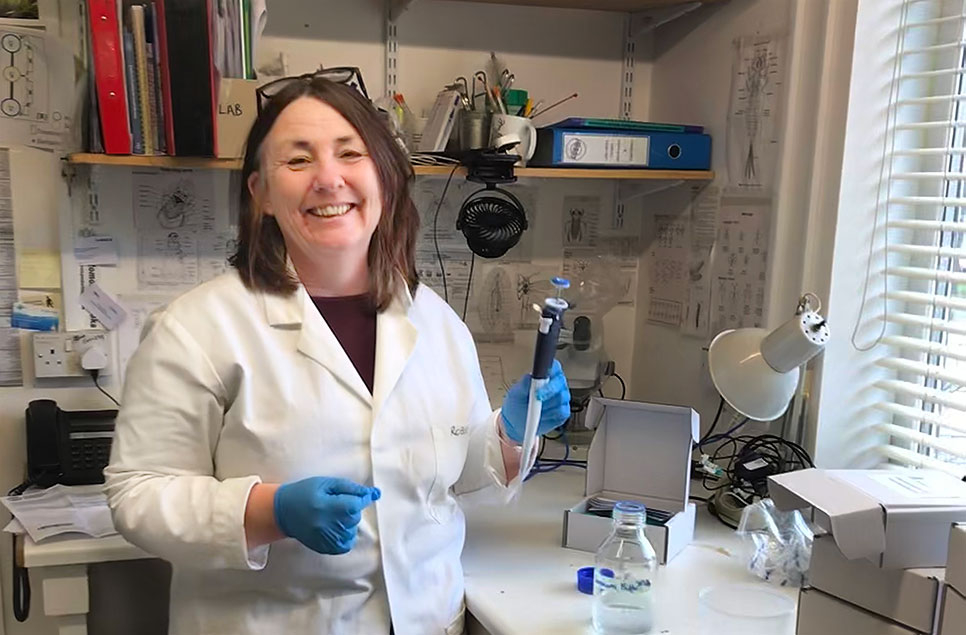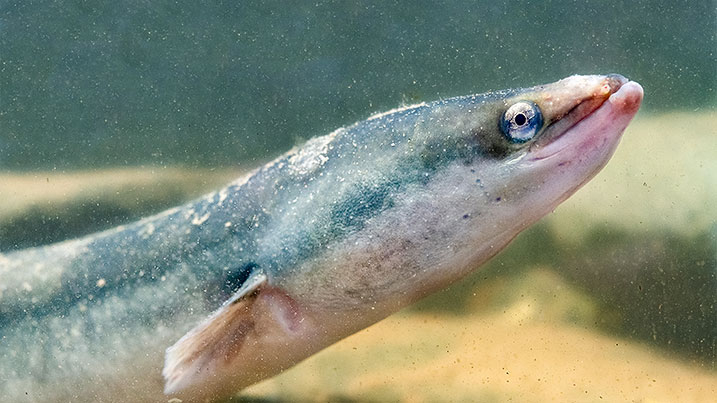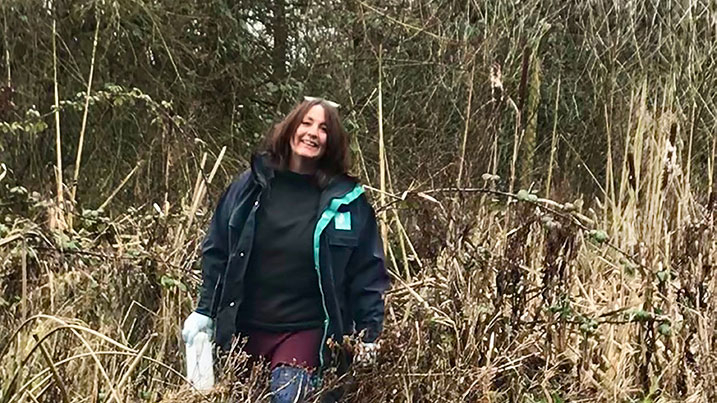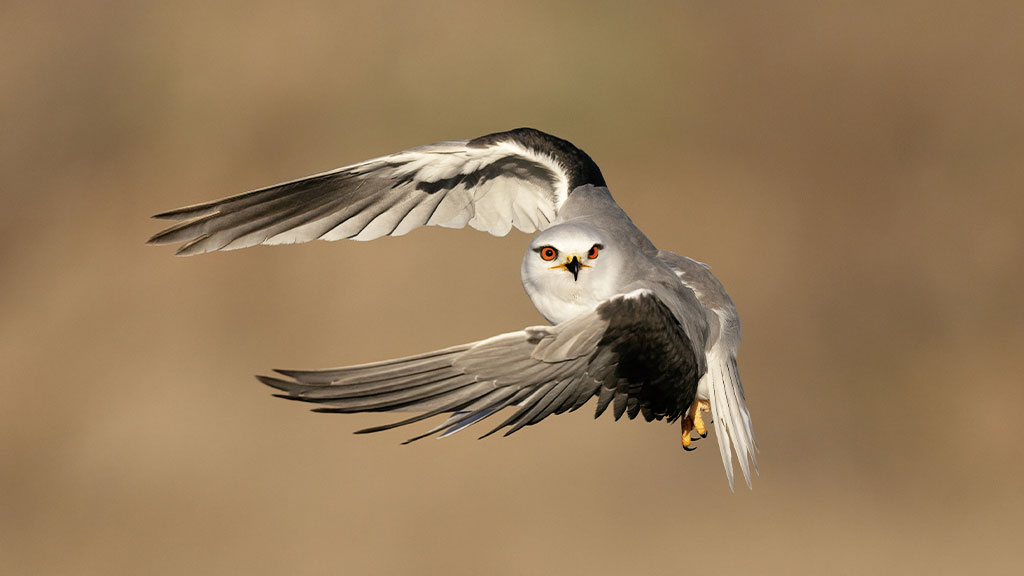Using ground-breaking technologies to show how biodiverse wetlands can be
WWT’s Laura Weldon, talks citizen science and the new technology that’s helping us monitor our more elusive wetland wildlife, why she champions our less cuddly wetland animals and how despite everything, she’s still hopeful for the future.

WWT’s Laura Weldon, talks citizen science and the new technology that’s helping us monitor our more elusive wetland wildlife, why she champions our less cuddly wetland animals and how despite everything, she’s still hopeful for the future.
I’m really excited to be working with new ground breaking technologies that are changing the way we monitor rare and secretive wetland wildlife.
Environmental DNA or eDNA is a rapidly evolving area of research and we’re only just realising its potential in the world of conservation. All creatures leave behind traces of DNA as they move about their environment. We’re familiar with forensic scientists sorting through small traces of DNA left at a crime scene, fishes and amphibians also leave DNA traces behind in the water in scales or mucus they shed. If we analyse this water, we can see exactly who’s living there or who passed through recently. Although the methods that I use have been around for some time their application to answer questions in ecology and conservation are new.
I like to champion our less cuddly wetland species.
My research passion at the moment is the plight of the critically endangered European eel. They might not be everyone’s favourite fish, but they’re a key component to healthy freshwater systems and a vital food source for otters and fish eating birds. Their dramatic decline is having an impact further up the food chain. But in order to help them, we need to know where they are. Traditionally if you were trying to find out how many eels there were in a given bit of water or wetland, you’d have to catch them with a net, which often meant handling the animals and disturbing their habitat. But eDNA sampling can change this as you just need to collect a sample of water and analyse that instead.

There’s huge potential to use these new techniques to engage more people in citizen science.
It can be challenging to keep motivated volunteers engaged in long term monitoring projects of rare or secretive species. Now, we’ve developed citizen science eDNA field sample kits. They’re very quick and easy to use, volunteers can collect and filter a sample of water and send it in to me. Thanks to the new equipment at our wetland science lab, I can now analyse the samples ‘in house’ and get back to our volunteers within a matter of days to tell them whether or not eels were present. We’re particularly interested in using this technique to sample the area between the River Severn and Stroud/Frome in Gloucestershire. We are using the results to build an ‘eel map’ to understand how eels use and inhabit the wetlands around the Severn Vale.
Some of the new DNA techniques offer so much potential for conservation.
Next generation sequencing is another very exciting development that we are currently using to identify insects. Combining this new method with traditional sampling techniques can speed up the analysis stages to get a full species list of everything that’s in that sample. This gives a lovely measure – a snapshot of biodiversity that was at that site at that time. We are using this technique to identify the insect biodiversity in our Natural Flood Management projects. We would like to know how slowing down the flow of water using woody dams and wet woodlands - like the ones we’ve created in Somerset, impact the aquatic and terrestrial insects. But identifying, counting and measuring them individually is very time consuming and also requires a really refined skill set.. This new technology has the potential to knock weeks and weeks off the normal intensive process of sifting through samples.
Soundscape analysis is another really exciting way to assess the biodiversity at a wetland through the acoustic environment.
We use small recording devices that can be programmed to record one minute clips during the noisiest parts of the day. This is a really brilliant bit of kit to record bird sounds and other noisy wildlife. They can be been left in position for days at a time and don’t disturb the wildlife when you make the recording. That way you don’t just get the sound of a blackbird ‘alarm-calling’ and scaring off the other bird life. We’re asking people to not only collect the recordings, but also to analyse the data themselves. They can either do this by listening and identifying the bird sounds, or we are hoping to test some software that can assess the sound files for them. This is a great option for non-birders or those less confident with identification.
In the summer you might pick up birds and insects, deer and even foxes barking.
In its simplest form you can divide the ‘sound scape’ into three areas – the human created noises or anthrophony; this might be the sound of vehicles or people passing by. Then there’s the sounds of nature or biophony, the birds insects and noisy wildlife and finally the geophony which might be the noise of rain or a bubbling stream. Once these soundscapes can be broken down into measurable features they can be compared and summarised as ‘acoustic indices’. We are using these as another way to measure how biodiversity differs across sampling sites. I’m also really excited to be adapting some of our recording devices so they can be used as hydrophones to listen in underwater in our rivers, streams and ponds.
The bit I love most about my job is the people.
Even with the pandemic and having to work from home, there’s such a good creative team at WWT. I’m also really enjoying the opportunity of working with volunteers and citizen scientists, this is all new to me. It’s wonderful to be a part of conservation in practice. I’ve spent a lot of time in university research where you can get a bit cut off from the real world. I’m enjoying being outside putting science into practice and seeing how engaged people are and how much of an impact these new research methods can have.
Actionable science is a really interesting concept for conservation at the moment.
It’s about taking science that works really well in the labs, and shifting it from the research setting to demonstrating that it can have very practical applications. I love being part of that.

At WWT we’re just one small cog that’s a part of changing people’s attitudes towards nature and the environment.
The Natural Flood Management work that WWT is involved in is really important because as well as reducing flood risk we work with communities on the ground getting them to come and monitor wildlife with us. They can see the impact these changes are having to the flood risk to communities downstream and importantly to the biodiversity too. Once communities are involved and have something to be proud of the effect snowballs and everybody influences everybody else.
I do feel hopeful.
What I love about WWT is that although (environmentally) things aren’t in a great state at the moment, we are generating tangible change, which is what good science does. WWT is also really good at telling people about the work they’re doing and the impact it’s having. That really helps people to value the natural world around us. It’s really easy to walk past a pond and not understand what kind of a state it’s in. But we can find out so much more about what’s going on beneath the surface in part, thanks to the new monitoring technologies I’m trialling. That makes it so much harder to ignore the plight of our wetlands and the wildlife that call them home.



